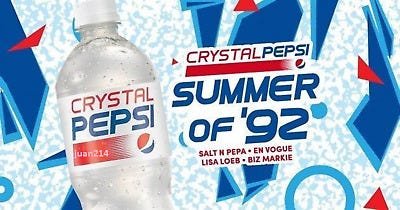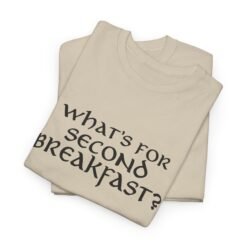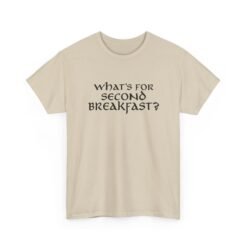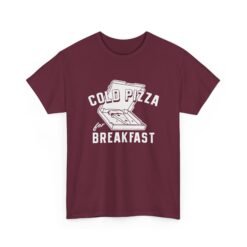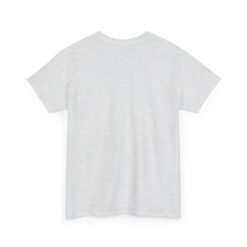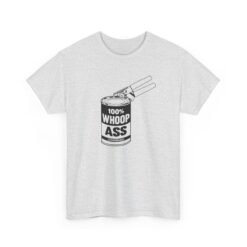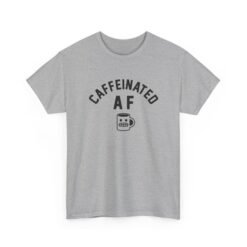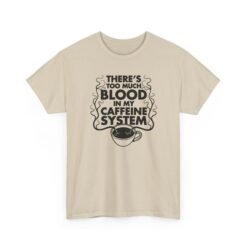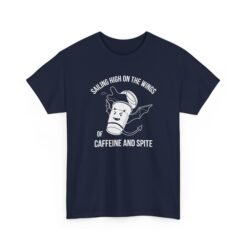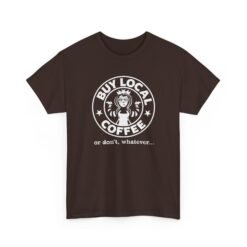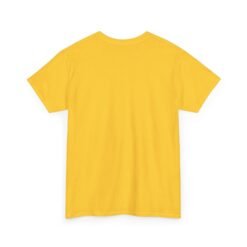Business History, Food and Beverage
Crystal Pepsi: The Clear Soda Fad of the ’90s That Disappeared Fast
The Introduction of Crystal Pepsi
Crystal Pepsi, a product launched by PepsiCo in 1992, emerged as a distinctive attempt to capture consumer interest during a vibrant era characterized by innovation and novelty. The beverage was intriguing not only because of its taste but also due to its unique color—completely transparent. This clear soda was created in response to the early ’90s cultural trends that favored products perceived as healthier and less artificial, often featuring claims of purity and transparency. PepsiCo aimed to align itself with these trends and make a statement in a market saturated with traditional sodas.
The marketing strategy surrounding Crystal Pepsi was heavily focused on generating curiosity and excitement among consumers. PepsiCo undertook extensive market research and promotional campaigns that emphasized the idea of a soda that defied conventional expectations. Television advertisements featuring celebrities and energetic music played a significant role in embedding Crystal Pepsi into the public consciousness, painting it as a revolutionary product in the soft drink landscape. The company’s aim was to position this clear beverage not just as another soda, but as an emblem of a new lifestyle—a refreshing drink that aligned with the modern consumer’s aspirations.
Additionally, the launch of Crystal Pepsi coincided with a broader societal fascination with health-conscious living and personal well-being. Consumers were increasingly drawn to products that were marketed as being free of artificial components or added colors, making the allure of a soda that appeared to be “pure” particularly compelling. This launch period set the stage for Crystal Pepsi’s initial hype, fostering a wave of anticipation among soda enthusiasts eager to try this innovative beverage. Ultimately, the intrigue surrounding this product exemplified how marketing could successfully tap into the zeitgeist, captivating a generation eager for novel experiences.
The Hype and Marketing Campaign
When Crystal Pepsi was launched in the early 1990s, it emerged as a groundbreaking innovation that stirred significant excitement among consumers. PepsiCo orchestrated an aggressive marketing campaign that effectively captured the attention of the public and positioned the clear soda as a revolutionary beverage. Leveraging the unique selling proposition of transparency, the campaign sought to entice health-conscious individuals and those curious about the novel concept of a caffeine-free, clear cola.
One of the hallmark strategies of the Crystal Pepsi marketing effort was the use of celebrity endorsements. High-profile figures, including renowned musician Van Halen, featured prominently in advertisements. Such endorsements lent the product an aura of credibility and desirability. The memorable 1992 Super Bowl commercial, which showcased Van Halen performing “Right Now,” further amplified the product’s visibility and established a strong connection between Crystal Pepsi and the spirit of the time. This synergy between music and advertising made the product particularly appealing to younger demographics, a crucial target for Pepsi.
In addition to celebrity endorsements, the marketing campaign vividly included catchy jingles and memorable slogans that resonated with audiences. The tagline “You’ve got to see it to believe it” underscored the distinctive nature of Crystal Pepsi, inviting consumers to experience the novelty first-hand. The unique branding conveyed a futuristic vision, further differentiating it from traditional colas. Sampling programs and promotional events played pivotal roles in generating buzz, ensuring that consumers had the opportunity to taste the product as soon as it hit the market.
As a result of these concerted marketing efforts, the initial consumer reaction to Crystal Pepsi was overwhelmingly positive. Its clear appearance, coupled with innovative marketing techniques, positioned it as an enticing alternative to dark colas. Ultimately, however, while the buzz surrounding the beverage was significant, it was also the factors contributing to consumer preferences that would shape its fate in the market. The initial popularity was momentarily achieved, but sustainability proved to be a critical challenge in the long run.
Reasons for Crystal Pepsi’s Downfall
The decline of Crystal Pepsi can be attributed to multiple factors surrounding consumer perception, competition, and internal strategic decisions made by PepsiCo. Initially launched in 1992, Crystal Pepsi was marketed as a “clear” cola alternative, positioned to tap into health-conscious trends. However, it soon faced challenges related to taste, which proved to be a significant barrier to its acceptance. Many consumers found the flavor lacking when compared to traditional colas, which led to a sense of disappointment. The novelty of its appearance did not compensate for the absence of the expected cola flavor, leaving a gap between consumer expectations and product experience.
Moreover, established brands like Coca-Cola and Pepsi dominated the market, making it difficult for a new entrant to stake a claim. These companies had built brand loyalty over decades that Crystal Pepsi could not rival. As consumer preferences began to shift increasingly towards tried-and-true flavors during the 1990s, the allure of Crystal Pepsi’s unique appearance faded quickly. The beverage found itself competing against a multitude of soft drinks that offered familiar tastes, further complicating its market position.
Additionally, internal decisions at PepsiCo played a crucial role in Crystal Pepsi’s discontinuation. The company underestimated the significance of brand loyalty and consumer habits, leading to a rushed marketing strategy that attempted to capture a trend without fully understanding its audience. After two years of fluctuating sales figures, PepsiCo ultimately decided to discontinue the product in 1994, marking a relatively short-lived experiment in beverage innovation. While Crystal Pepsi was a pioneer in its visual appeal, it ultimately could not withstand the competitive pressures and changing consumer preferences of the time.
Legacy and Nostalgia: Crystal Pepsi’s Impact on Pop Culture
Crystal Pepsi, the clear soda sensation of the early ’90s, has left an indelible mark on pop culture that resonates even decades after its initial launch. Its unique appearance and marketing strategy set it apart from traditional soft drinks, creating a fervor among consumers who were eager to embrace novelty and innovation. This soda not only represented a shift in consumer preferences but also mirrored the zeitgeist of the era, with its promise of purity and health consciousness amidst a growing concern for artificial ingredients.
Although Crystal Pepsi was discontinued in the mid-’90s, its legacy endures. The brand has resurfaced occasionally, such as in limited releases and nostalgic marketing campaigns, highlighting the ongoing consumer interest in retro products. This trend reflects a broader movement within marketing strategies, where companies tap into nostalgia to rekindle interest in long-forgotten brands. The resurgence of products like Crystal Pepsi showcases how brands can successfully leverage cultural memory to create excitement among both new and former consumers.
Furthermore, Crystal Pepsi has secured its place in modern media. Numerous references in television shows, movies, and online discussions affirm its status as a cultural touchstone. Social media platforms have become a breeding ground for memes and discussions that celebrate the unique characteristics of this clear cola, transforming it into a symbol of ’90s nostalgia. These digital conversations not only revive memories for those who experienced the era firsthand but also introduce younger generations to this intriguing chapter in beverage history.
Ultimately, the impact of Crystal Pepsi extends beyond its brief commercial life, evolving into a nostalgic emblem of a bygone era, shaping consumer behavior, and influencing contemporary marketing practices. Its journey from an innovative product to a nostalgic icon exemplifies how brands can cultivate lasting connections with consumers through memory and sentiment.
Fairytale and Fantasy
“What’s for Second Breakfast?” Unisex T-Shirt – Hobbit Appetite Approved
Food and Coffee
Food and Coffee
Business and Finance
“Buy Local Coffee, Or Don’t, Whatever” Unisex T-Shirt – Caffeinated Sass
Food and Coffee

